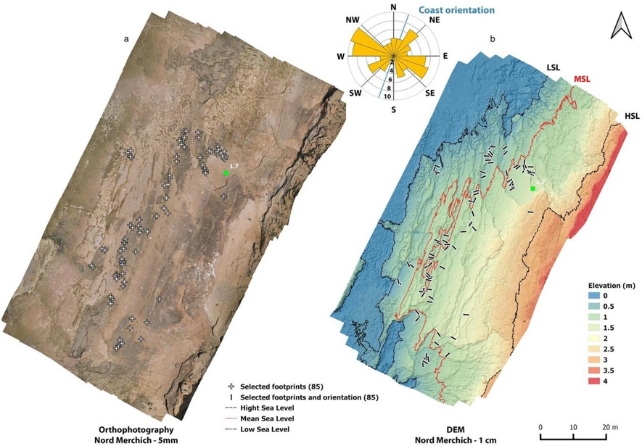Products You May Like
Archaeologists in Morocco have unearthed more than 80 human footprints dating back around 100,000 years and believed to be the oldest in North Africa.
The footprints, probably left by five Homo sapiens, including children, were discovered on the coast of Larache, a city 90 kilometres (55 miles) south of Tangier, by archaeologists from Morocco, Spain, France, and Germany.
“This group (of Homo sapiens) was crossing the beach towards the sea, probably in search of food and shellfish,” Anass Sedrati, curator at the archaeological site of Lixus Larache, told AFP.
“They were probably fishermen or gatherers.”

The researchers, whose study was published in scientific journal Nature in January, said the footprints were some of the world’s best-preserved human traces and the oldest in North Africa and the southern Mediterranean.
“This discovery was made during a field mission in July 2022, as part of a scientific research project on the origins and dynamics of the boulders strewn along the coastline,” said the researchers led by France’s Universite Bretagne Sud.

In 2017, some Homo sapiens remains dating back 300,000 years were unearthed in northwest Morocco, a breakthrough that pushed back the estimated origin of the human species by 100,000 years.

The footprints in Larache were further proof of the importance of the region in human history, said Anass Sedrati, noting that animal traces had also been discovered.
“We must preserve this remarkable heritage site, even if it is threatened by rising sea levels and storms,” Mouncef Sedrati, head of the research project, told AFP.

“Other footprints will be discovered as sediments erode,” Sedrati said.
“It would be interesting then to follow this erosion and uncover new traces that would provide more details on Homo sapiens who lived along this coast.”
